This post may contain affiliate links. Please see our disclosure policy for more details.
Learn how to safely prepare and serve mango to babies as early as 6 months! Also discover fun snack and lunch ideas with this for older kids.
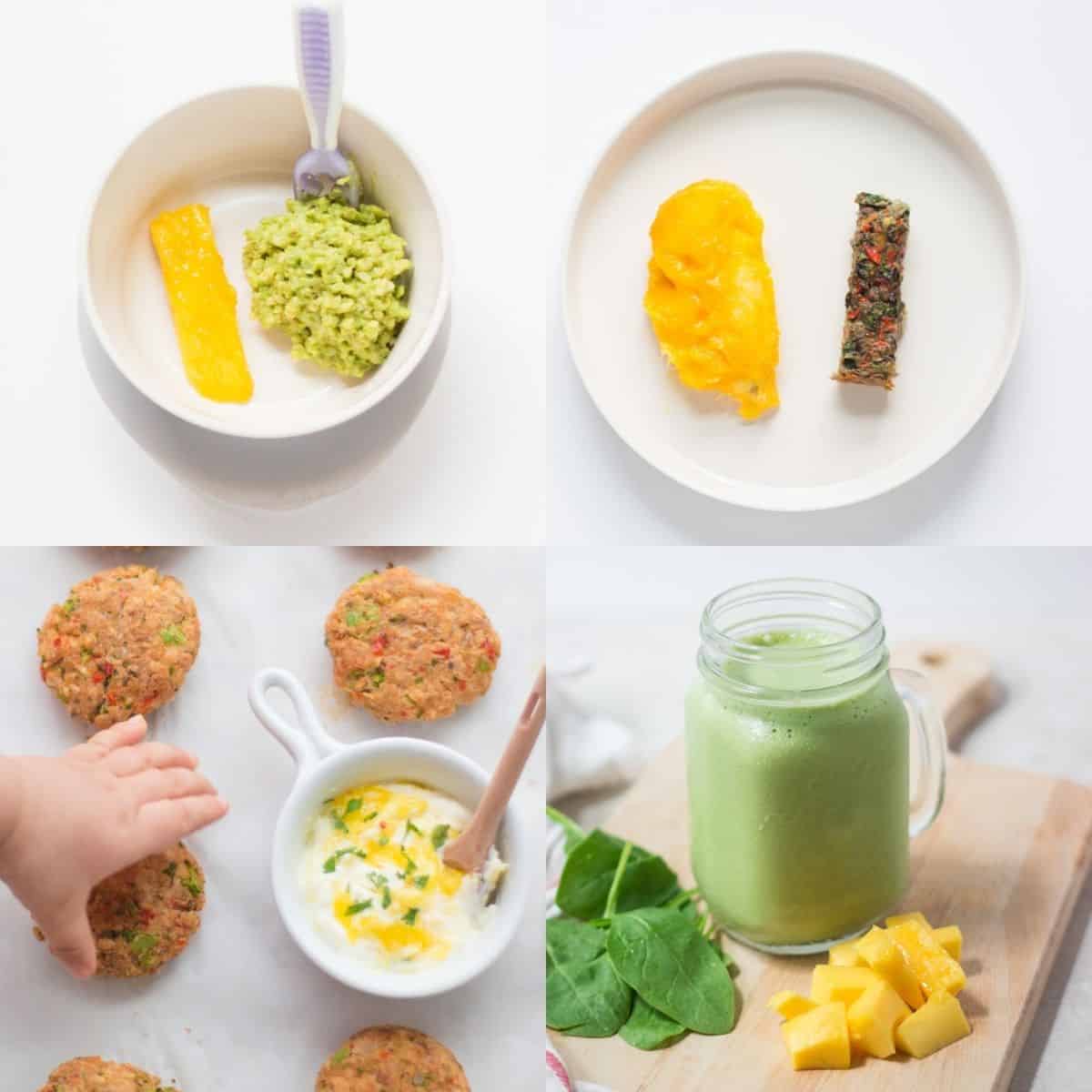
Table of Contents
When Can Babies Eat Mango?
If soft and ripe, mangoes can be introduced to babies as soon as they’re ready to start solids, usually around 6 months. It’s important to remember that your baby is unique and that rather than going by the calendar, you need to make sure your baby is DEVELOPMENTALLY ready to start solids.
If you’re unsure, be sure to grab this FREE handout!
Health Benefits For Young Children
Interesting fact! Mangoes are called the king of fruits because it’s the most widely consumed fruit in the world! It is a large tropical stone fruit with yellow or orange flesh surrounding a large white seed.
And they are available all year-round so you can enjoy no matter the season!
Mangoes contain over 20 vitamins and minerals, including vitamins A, C, B6, and folate.
They are a particularly excellent source of vitamin C, which not only helps strengthen the immune system but helps enhance the absorption of plant-based iron considerably!
Just like with butternut squash, their deep yellow-orange color is due to beta-carotene, a powerful antioxidant, which gets converted to vitamin A in the body to support the development of vision and immunity in babies and kids.
They’re also a great source of fiber so if your baby is constipated, give mangoes a try!
Are Mangoes Safe for Babies?
As long as the fruit is soft and ripe and is served in an age-appropriate way, it is safe. For kids and adults, slightly ripe but still firm mangoes are ideal as they hold their shape better once cut.
However, for babies, allow the mangoes to get super ripe so it’s easy for them to mash with their gums.
Mango allergy is pretty rare as well.
May also be interested in: Pears for Babies
Selecting the Best Mango
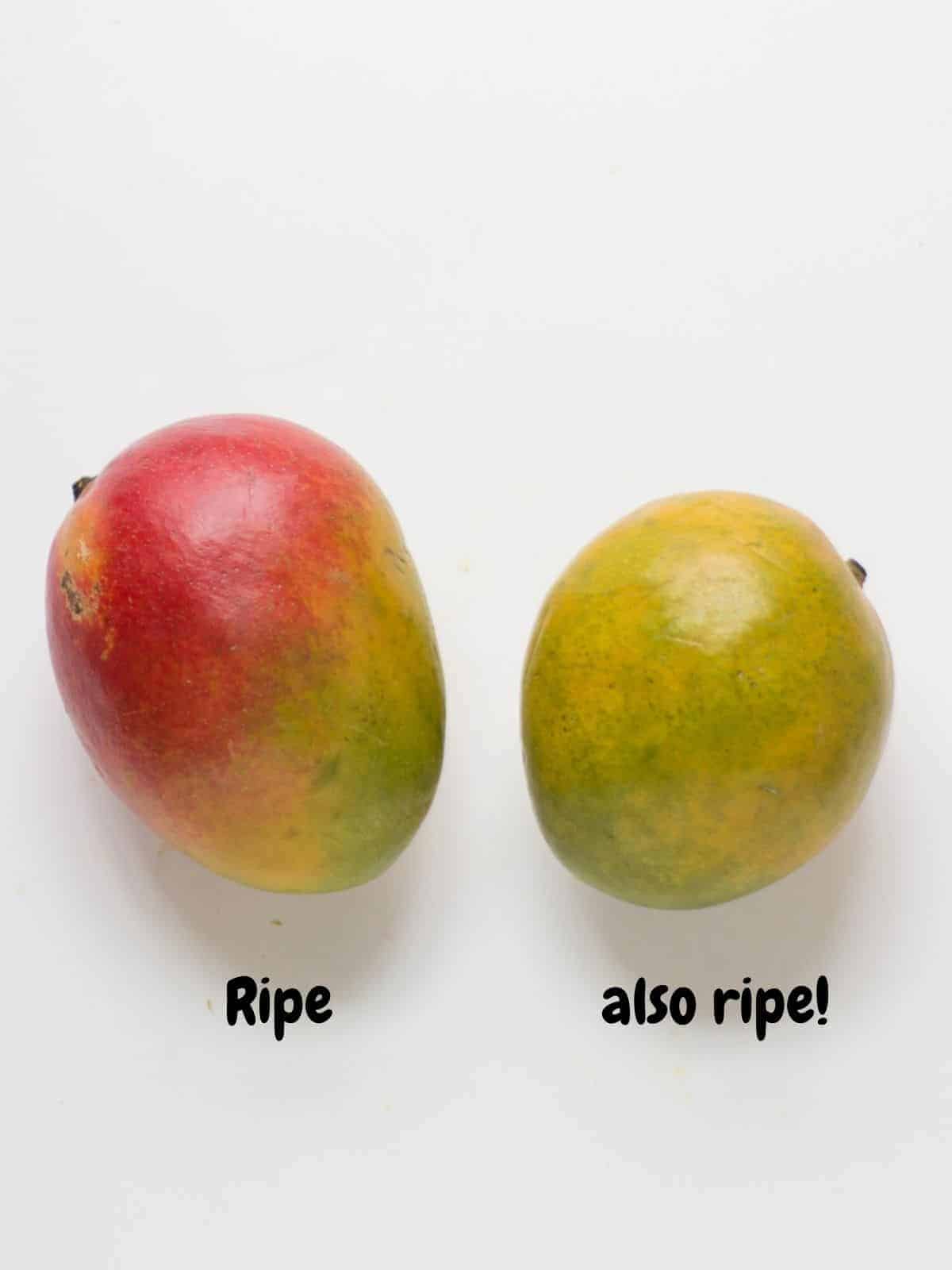
Give it a gentle squeeze. A ripe mango should give slightly, like a ripe avocado, and may have a fruity aroma at the stem.
Note that color is not a good indicator of ripeness. So don’t go searching for the red color. Go by the feel!
Best Way to Store
Never store unripe mangoes in the refrigerator. Instead, allow to ripen at room temperature or store in a brown paper bag to speed up the process.
Once they are ripe, you can refrigerate.
Once cut, refrigerate in an airtight container for 3-5 days. To freeze, flash freeze by spreading them out on a lined baking sheet (I like to use parchment paper or silicone mat).
Once frozen solid, transfer to a freezer safe bag or container and store for up to 6 months. This extra step will prevent all the mango pieces from sticking together in one big block, thus allowing you to take out only what you need.
Absolutely! It is just as nutritious as fresh and so convenient to have on hand to incorporate into your child’s snacks and meals.
How to Cut A Mango
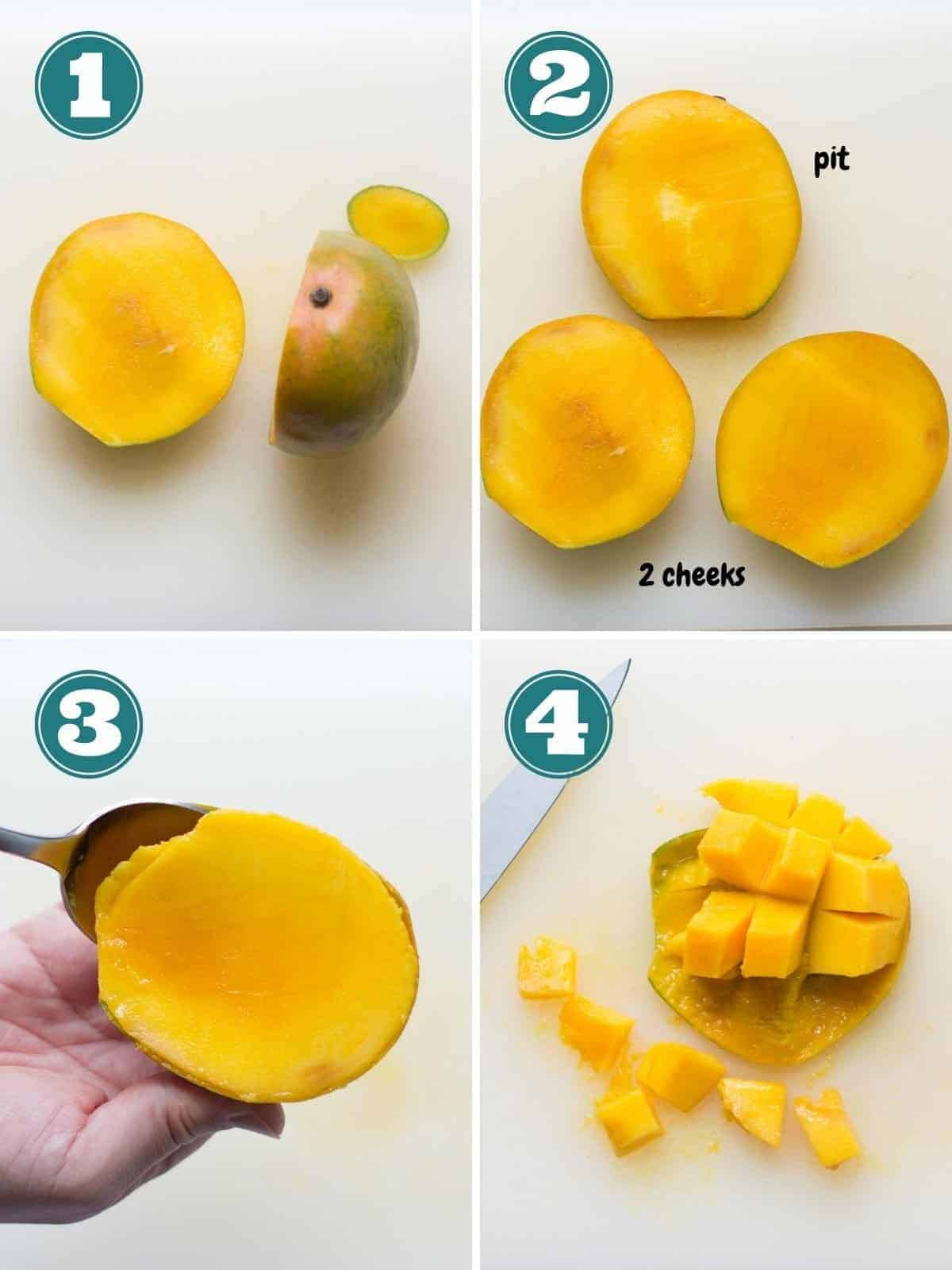
1. Hold your mango upright with the stem end facing up. Cut a thin slice off the other end to create a flat base. Identify the pit/seed, which is under the stem end. You want to cut around this pit to separate the flesh.
2. Position your sharp knife next to the stem and cut along the side of the pit. Repeat on other side. You will end up with two large oval pieces or “cheeks.”
Now you should have three pieces: two halves and the middle section with the pit. Don’t discard! More on this below.
To remove the flesh from the skin use one of these two ways:
3. Hold the mango cheek in your hand and scoop out the flesh using a large spoon or a glass cup.
4. Score the mango cheek by making vertical then horizontal cut marks. Be careful not to cut through the skin. To remove the mango pieces, hold the scored cheek in your hand and use a large spoon to scoop them out.
Video Tutorial
Mango for Baby Led Weaning
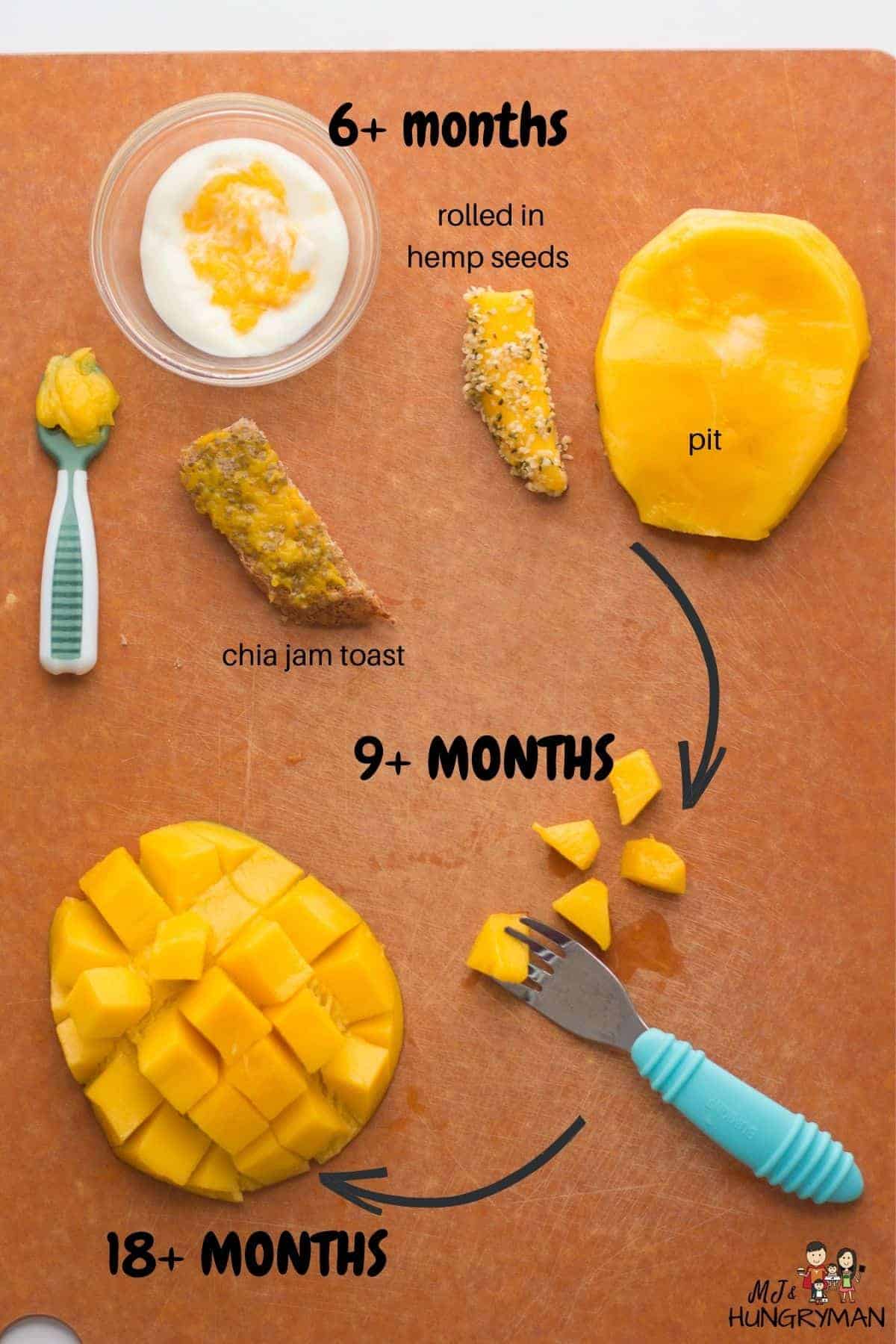
6+ months old
- Pureed or mashed – Here’s how to make homemade mango puree. You can preload onto a spoon or mix into yogurt, oatmeal, lentils, etc.
- Serve this kale mango smoothie as a sauce.
- Make chia jam (recipe below) – spread onto toast or mix into any of the above suggestions.
- A whole mango pit with some flesh left on is wonderful for strengthening your baby’s jaw and promoting oral motor skills. It also makes for a delicious teether. More on this below!
- A mango spear (at least the length and width of an adult’s index finger) – try coating with ground nuts and seeds (pictured: shelled hemp seeds), shredded coconut, almond flour, etc. to make it easier to grab. If you don’t want to coat with anything, handing it to your baby will help them to secure the spear in their hand.
9+ months old
Along with the suggestions above, you can cut into bite-sized pieces once your baby has developed their pincer grasp.
This is a great time to introduce utensils if you haven’t already. Here are our favorites.
18+ months old
Invite fun by serving mango “hedgehogs”
Keep in mind, it’s best to avoid offering dried mango and mango juice until age 2.
Mango Pit for Teething Babies
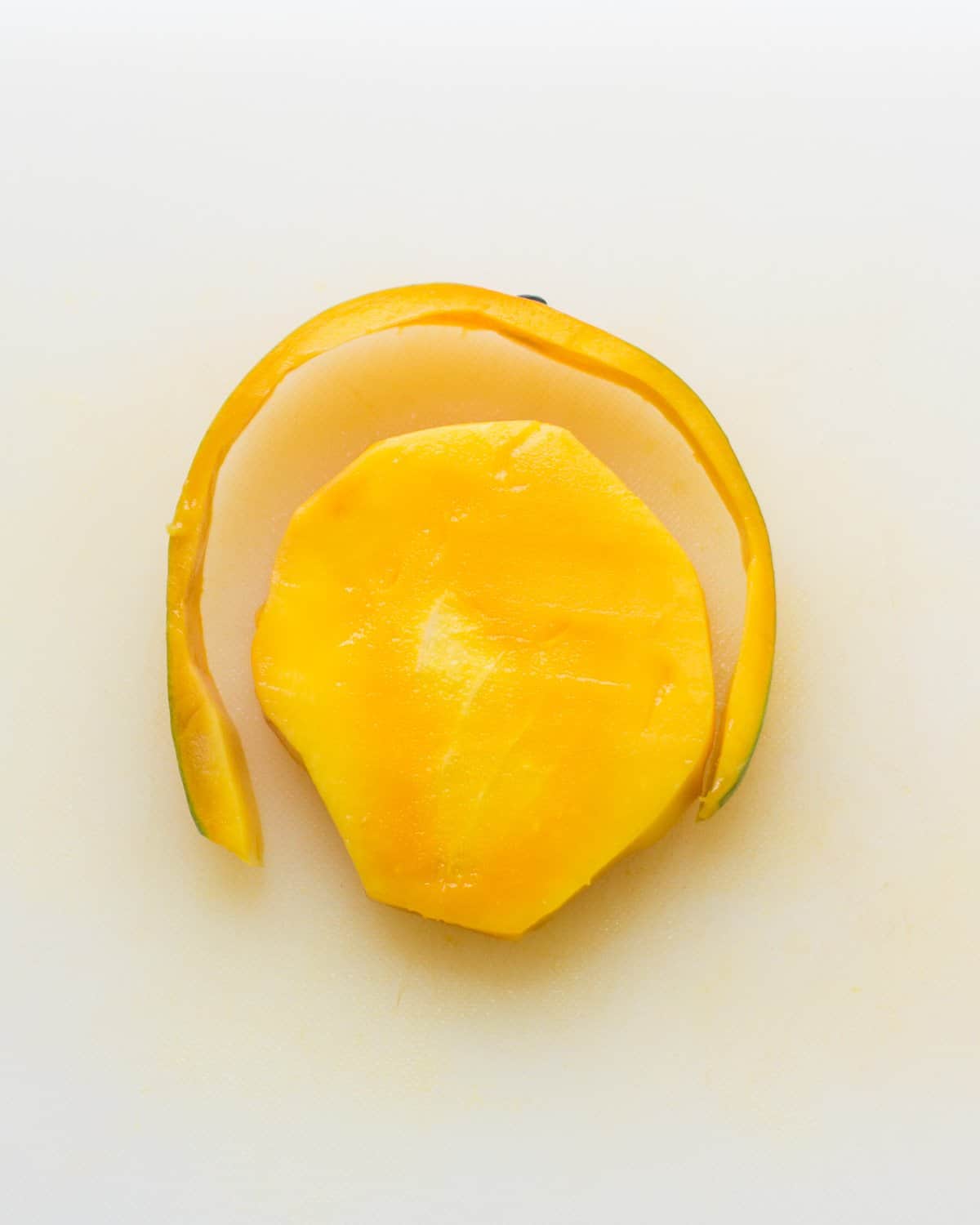
Remember that mango pit I told you to save earlier? Simply peel off the skin around it and refrigerate for at least 2 hours.
Then just like that you have the most delicious teether that your baby will happily suck and gnaw on for a while, buying you some time to enjoy that hot cup of coffee/tea. You’re welcome 😉
For a Deep Dive on Other Foods, Check out my “How To” Series.
Serving Suggestions for Kids
Mangoes make for a great snack or addition to any meal. Here are some fun ideas!
- Creamy Mango Popsicles
- Mango Sorbet
- Smoothies – like this mango avocado smoothie
- Mango yogurt
- Quesadilla
- Savory – add cheese, beans, and diced mangoes
- Sweet – spread a layer of peanut/nut/seed butter and add diced or pureed mangoes
- Toast
- Mashed avocado topped with sliced or diced mango
- Peanut/nut/seed butter topped with mango
- Greek yogurt, cream cheese, or ricotta topped with mango
- Try with mango chia jam (recipe below)
- Kabobs – Putting food on a stick is especially great for picky eaters. Inviting fun and newness can really help spark their interest. Feel free to add whatever you wish.
- Cheese cubes + fruits + vegetables (like tomatoes, cucumber) + chicken, meatballs, tofu, etc.
- Mango chicken curry – the mango adds sweetness and tones down the heat. This is the perfect curry recipe for little ones.
EASY Breakfast Ideas for Toddlers
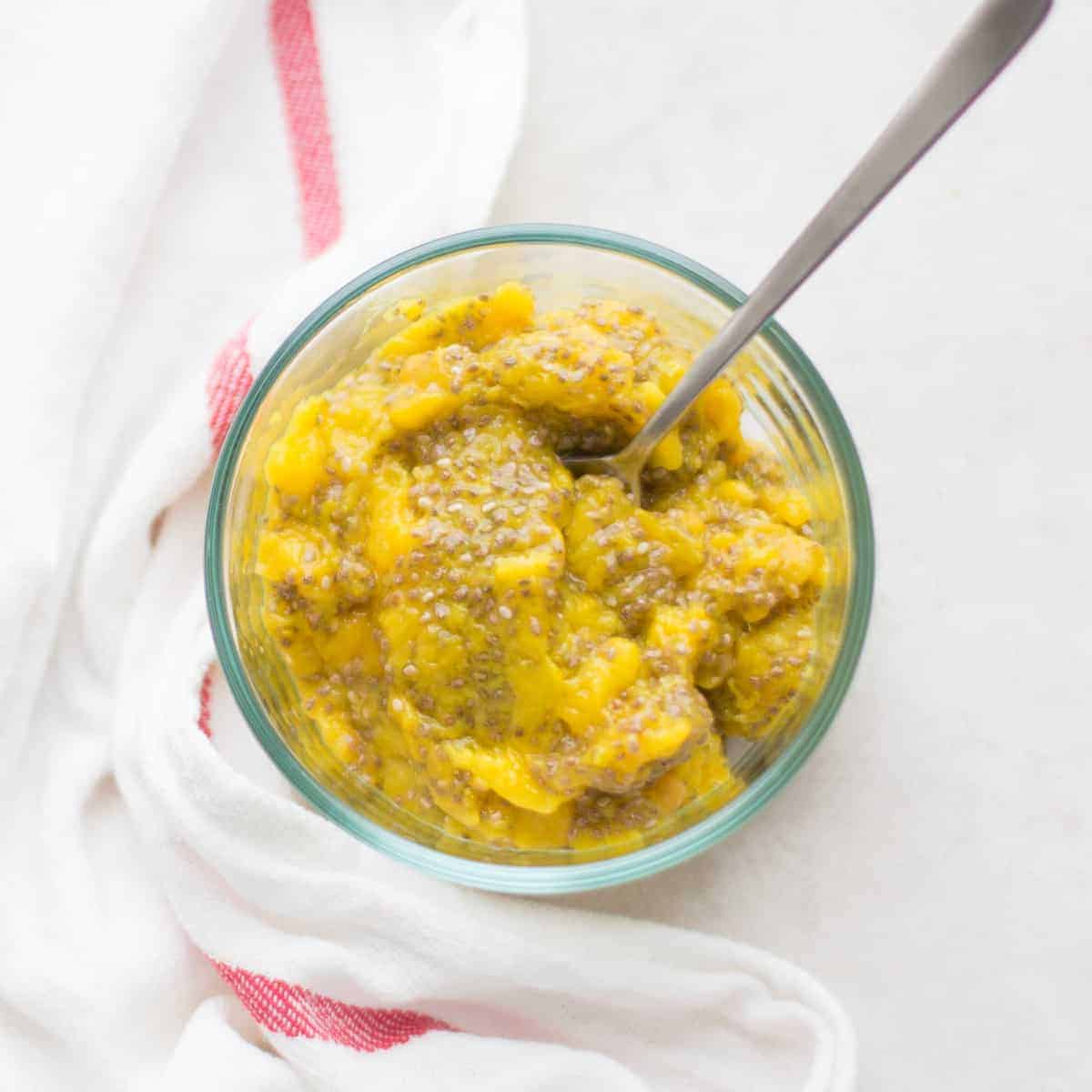
Did you make this recipe? Leave a rating below and let me know how you liked the recipe! Your feedback means so much to me!

Mango Chia Seed Jam for Babies and Kids
Ingredients
- 2 cups chopped mangoes (about 1 mango)
- 2 tablespoons chia seeds
- 1-2 tablespoons (optional) honey, maple syrup – see note
Instructions
- Add fruit to a saucepan and cook over medium heat until the fruit breaks down, about 5 to 10 minutes. Using a potato masher or the back of a fork, mash the mangoes to desired consistency. I like to keep it a bit lumpy.
- Remove from heat. and stir in the chia seeds. Let it sit to thicken. If you want it thicker, add more chia seeds (1/2 – 1 teaspoon at a time).
- Once cooled, transfer to a jar and keep in the fridge for up to 2 weeks or in the freezer for up to 3 months.

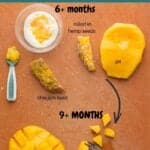













Sooo yummmm-y!